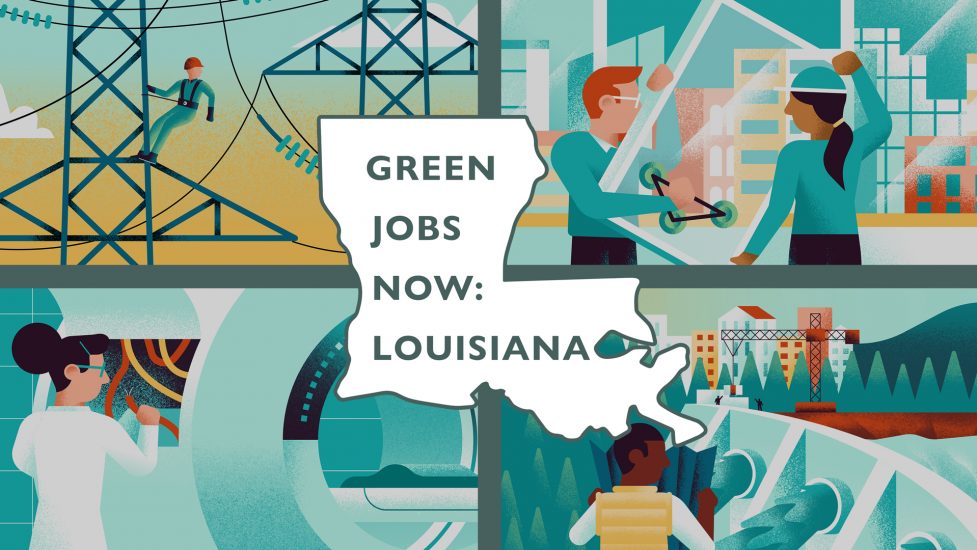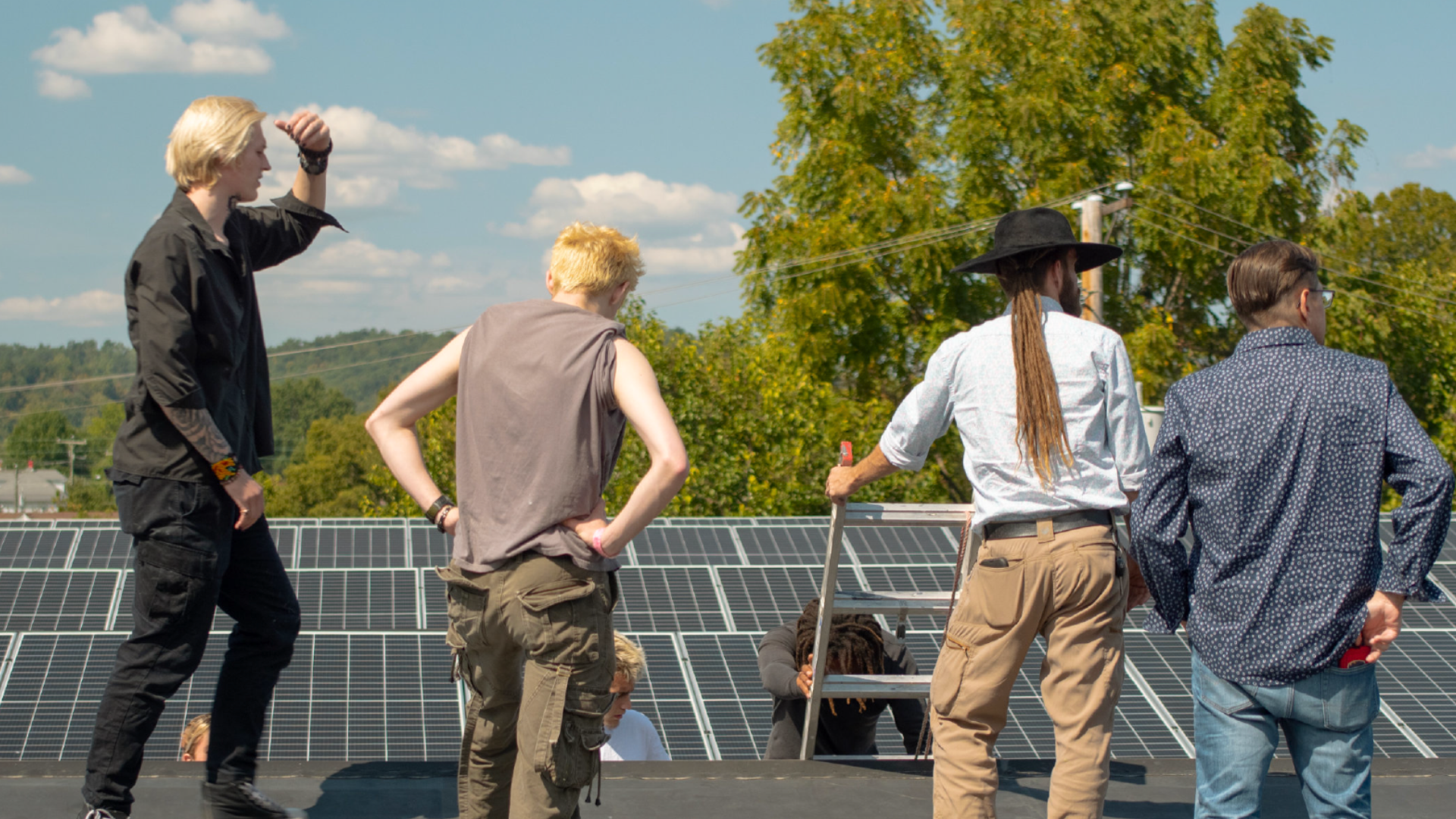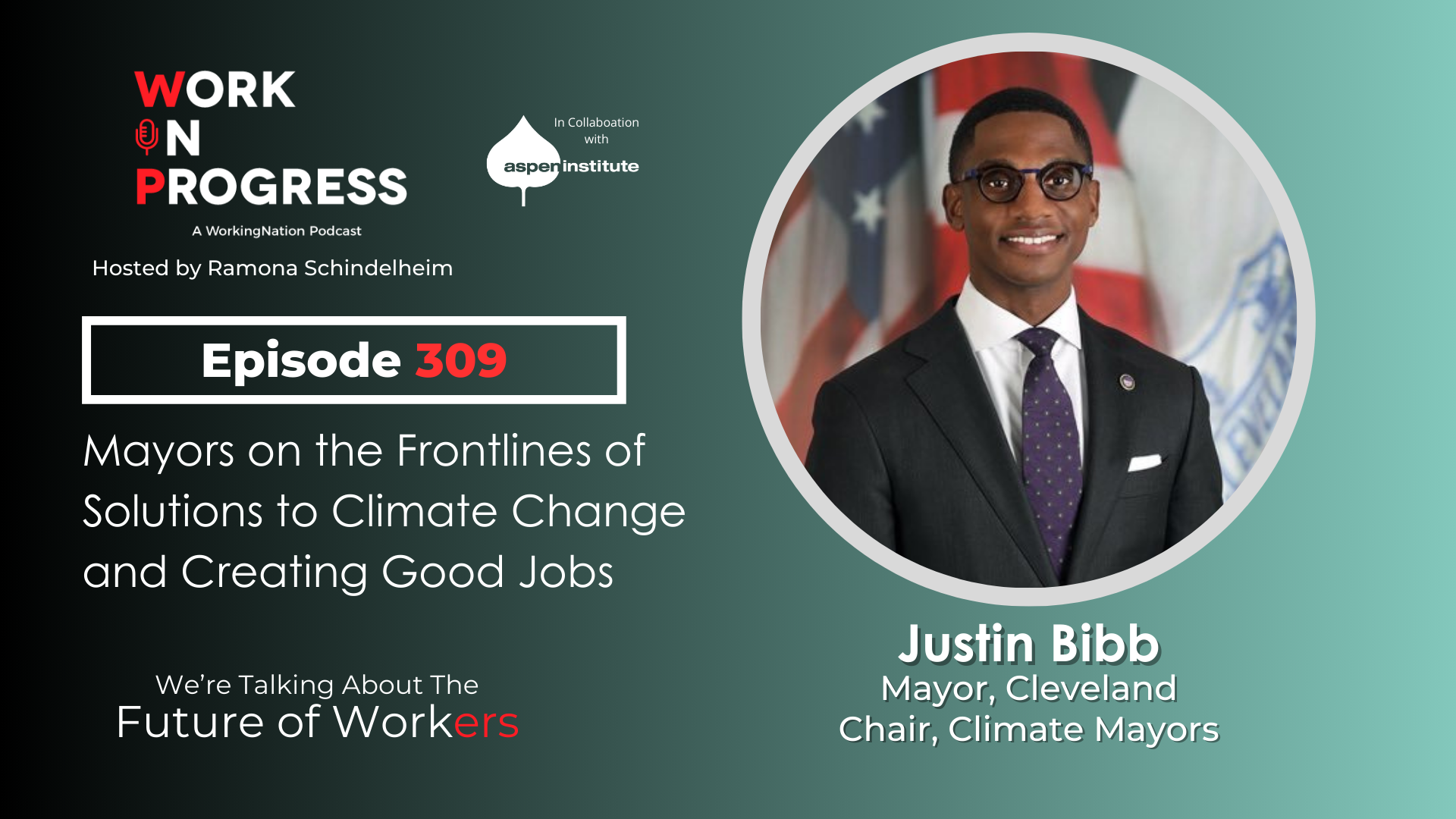WorkingNation’s Green Jobs Now series is looking at green jobs opportunities and the skills needed
to get those jobs across the country with a series of state-by-state reports. Next up: Louisiana.

It is never too late to reinvent yourself. That’s exactly what Stevie Green of Baton Rouge, Louisiana is doing. At age 49, he’s more than halfway through a two-year program training him for a new job at the energy plant where he’s worked as a security guard for the past few years.

“We have local plants geared toward green energy – green ammonia, blue hydrogen. We are privileged to have them locally,” says Green. “It is going to be a game changer, not only for me, but it is going to be a game changer for everyone.” Green’s training includes an understanding of how an energy plant operates – from start-up to shutdown – and includes hands-on training on the process of creating greener energy.
When he’s done with the program later this year at the River Parishes Community College campus in nearby Gonzales, Louisiana, he’ll be ready to move into a new job with a higher salary. “Going from security to operations. It is a huge [salary] difference. Let’s say I’m heading in the right direction.”
Green is betting his future on clean energy. And so is the state of Louisiana.
‘Preparing ourselves to succeed in a new economy’

Gov. John Bel Edwards of Louisiana was among the thousands who gathered in November in Glasgow, Scotland to attend the United Nations Climate Change Conference, known simply as COP26. There he acknowledged that while his state remains a key producer of oil and gas, Louisiana is also poised to lead the way on clean energy. A move, he said, will lead to a cleaner environment and, importantly, thousands of jobs.
“It’s about avoiding the worst outcomes, but it’s also preparing ourselves to succeed in a new world and in a new economy driven by these imperatives – to be more resilient to disaster, make sure that those disasters are less damaging to the environment, and then take advantage of all of the opportunities that we have, and they are many, to position ourselves to take advantage of this in terms of growing the economy.”
Edwards argued that embracing clean energy technology will help Louisiana maintain its position as one of the nation’s top energy producers. Earlier this month, the Louisiana Climate Initiatives Task Force – commissioned by Edwards – sent him its first report and recommendations. While there was some dissent on particular proposals, in the end, the report is a two-pronged call to action: Fix the environment. Create jobs.
“The risks posed by climate change to the people of Louisiana are high,” states the report. “Taking action to address climate change is also an opportunity to improve the health, equity, and quality of life of Louisiana residents, conserve the environment and cultural heritage, and grow and diversify the economy, while offering safe, meaningful employment for Louisiana’s workforce.”

The state has already taken a step in that direction, signing a deal with Air Products to build a new $4.5 billion clean energy complex in nearby Burnside in Ascension Parish that will produce blue hydrogen which will be transported across the Gulf Coast and around the world. Blue hydrogen is created when natural gas is split into hydrogen and the CO2 is captured and stored.
In a statement announcing the project, Edwards said, “Carbon capture and sequestration are important to Louisiana’s efforts to reduce carbon dioxide emissions while maintaining jobs and growing our manufacturing base.”
The project will create 170 permanent jobs and employ more than 2,000 construction workers over the next three years, according to Air Products. The company estimates the average annual salary for an employee at the plant will be $93,000.
Green Jobs Now: Louisiana
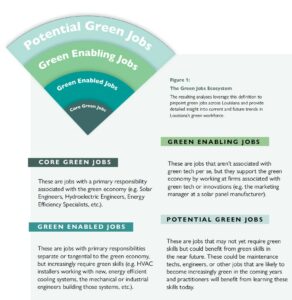
The green economy is still a small slice of the overall Louisiana economy, but it is growing and will continue to grow, according to our new report, Green Jobs Now: Louisiana, produced by WorkingNation and Emsi Burning Glass, a data research firm and our partner in our ongoing reporting on opportunities in the green economy around the country.
The report breaks the green workforce down into four categories – core green jobs, green enabled jobs, green enabling jobs, and potential green jobs (Figure 1).
Currently, there are over 11,073 workers in Louisiana’s green economy, and there were a little more than 2,000 new green job openings in the state last year. That number may seem small, but, according to the report, “By comparison, this is more than twice the number of computer and math workers in Louisiana.”
The report cites a growing demand for green enabled jobs, that is, “workers in roles that are not considered green by default, but who are required to have at least one green skill or competency.” The majority of the new job postings last year – 1,722 – were in that category.
These existing green jobs include core jobs – those that are directly in the green economy – such as solar panel installers, alternative energy managers, and water management workers.
And there is good news for job seekers and workers thinking about changing jobs or acquiring new, green skills. Our report projects that over the next five years, employment demand for green jobs in all categories will increase by 2.85%
Building Green: ‘Do well, teach well, and leave the place in a better condition’
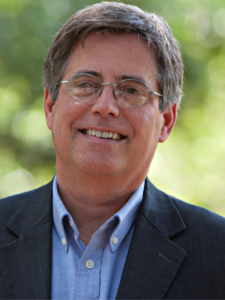
(Photo: Tipton Associates)
Architect Ken Tipton’s job is a good example of a green enabled job. His firm Tipton Associates is the oldest architecture practice in Baton Rouge – 143 years old – and they’ve been building green for decades. For Tipton, his work is a combination of protecting the environment and having a career that gives him a sense of purpose.
“When you talk about green buildings, there are several things that come to mind. How do you perform at a high level from an energy perspective? How do we use what we have to the optimum? How do we avoid waste? How do we innovate?” Tipton says. He explains that, to some degree, green design techniques are part of an architecture student’s training, “through a course directly, but more often through what they would call a studio environment, where they apply what they’ve learned, design projects, and work with the studio instructors.”
How successful a working architect is with the environmentally-friendly criteria is judged by the U.S. Green Business Council (USGBC) which issues a LEED rating. “To achieve LEED certification, a project earns points by adhering to prerequisites and credits that address carbon, energy, water, waste, transportation, materials, health, and indoor environmental quality,” according to the USGBC website.
Tipton Associates, in a joint venture with Cockfield Jackson Architects and PSA-Dewberry, designed the Main Branch of the East Baton Rouge Parish Library, which was awarded a LEED Silver Certification.
The architects took many green strategies into consideration – site-sensitive building orientation, daylight harvesting, recycled materials, energy-efficient window glazing, geothermally-assisted heating and cooling, and efficient plumbing fixtures.
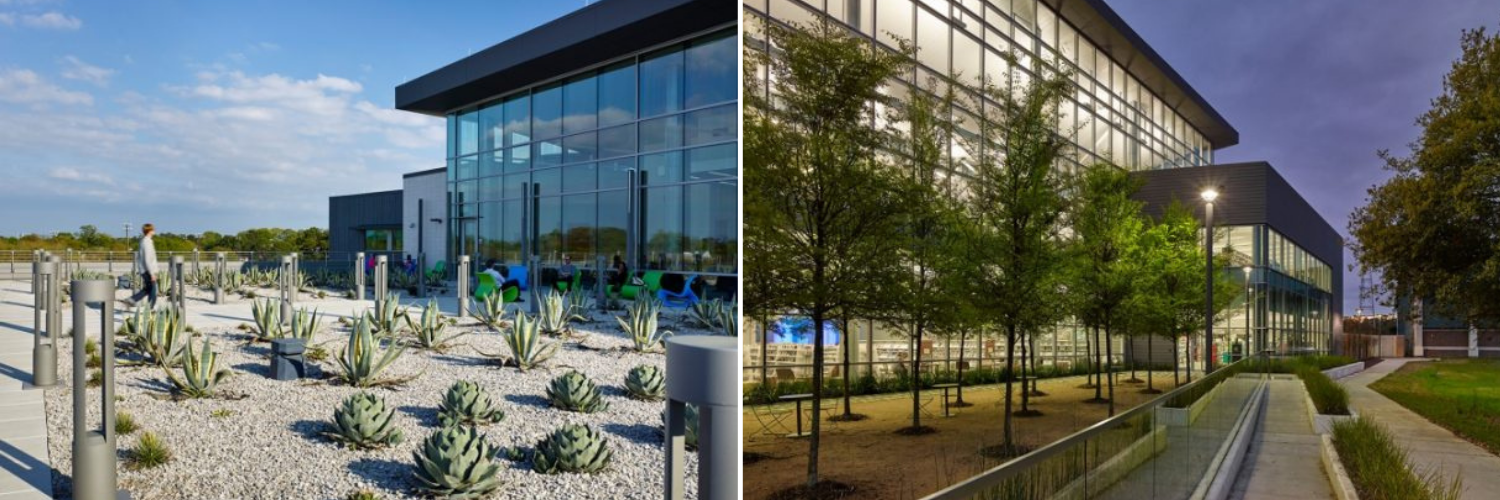
“It is truly a community building in terms of engagement, in terms of what happens there, and in terms of people and what services they can find,” Tipton says. “It’s one of those buildings that you love being a part of because it speaks on so many levels to so many people.”
Tipton says that one of his key goals as a green architect is to innovate – to find a way to do more than the client might have anticipated or imagined – but his main goal with his design is to educate. “How do we help others see and learn and know what it is that a building is doing? Buildings speak. They need to share a story. Part of green building is really helping those that use the buildings to understand and see and participate in what’s going on around them.”
He concludes, “Architects came into being because people aspire. The fact that we can do well, teach well, and leave the place in a better condition, that is something that ought to get us all up in the morning, excited about what we do, and how we do it.”
In-Demand Green Skills and Occupations
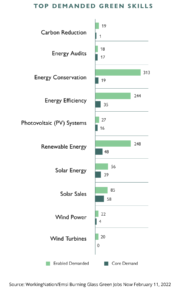
Currently, the most in-demand skills related to the green economy in Louisiana are those related to energy conservation, energy efficiency, and renewable energy. Many green skills offer strong salary boosts across roles, such as carbon management and energy audits, both of which increase annual salaries by over $10,000 on average. This suggests that investing in training workers in these skills will have strong returns. Workers across many careers and with differing levels of education can benefit from learning green skills.
“The top occupations across the green jobs ecosystem range from environmental scientists and engineers to production workers and a variety of different technicians. In many of these roles, green skills offer significant salary boosts of $3,000 or more, on average,” according to the Emsi Burning Glass analysis.
The report concludes that there are an estimated 462,580 workers in Louisiana who have skills and occupations similar to those found in the core and enabled green workforce. With a little reskilling, they could easily help meet the growing demand for workers needed to address both the climate change issues in the state, particularly along the coastline, and a dwindling supply of clean groundwater.
Shifting from Old Energy to New Energy
The mission of the Louisiana’s Community and Technical Colleges System (LCTCS) is to help improve the quality of life for its residents through education programs and skills training programs. LCTCS president Monty Sullivan says the state’s emphasis on new, cleaner energy has created a big opportunity for job seekers and workers.
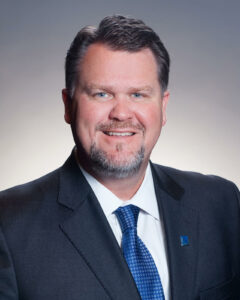
“There’s a broader shift that is occurring in Louisiana. As a state, obviously we have been historically a fossil fuels economy and that is changing dramatically,” Sullivan tells WorkingNation. “It really began back around 2010 with the emergence of natural gas becoming much more prominent, and natural gas began to replace traditional oil in many regards in terms of the manufacturing processes.”
It’s transitioning Louisiana’s economy further from the energy of old to a new energy base with a huge component being workforce-related. “We’re in the midst of an economic development effort right now in the port of Baton Rouge. It’s a biodiesel effort and it has taken the pulp from the sugar cane harvest and turned that pulp into biodegradable fuel. That is the fourth project of its type that we have had involvement in over the last five months.”
Last year, the LCTCS secured a $1.5 million grant to help transition traditionally carbon-related energy source training programs into training for jobs at facilities that won’t produce carbon, or are at least carbon neutral.
Blue Jobs are Green Jobs
River Parishes Community College (RPCC) is a big part of the workforce development ecosystem along the Mississippi River in Louisiana, working with major energy employers and other industrial companies. Its Process Technology program trains workers for local jobs at plants at four campuses in five parishes, including Ascension Parish where the new blue hydrogen plant will be built.
“Some of our local companies are shifting to green energy, such as green ammonia and green/blue hydrogen. We focus on process technology, instrumentation, and all the crafts such as welding and electrical. Our program prepares for all of these opportunities, but their career placement will determine what specific type of processing they will be doing,” explains Jim Carlson, the interim chancellor of RPCC.
RPCC is heading full speed into green energy technology and skills training. This summer, it will unveil its new PET facility – PET is an acronym for process equipment trainer – on its Gonzales campus. “It’s a fully functional plant and it’ll be able to mimic any of the processes that are done at the local industries that we work with. We will be able to train specifically on solar, wind, electrolysis, and other green sources of energy,” Carlson adds.
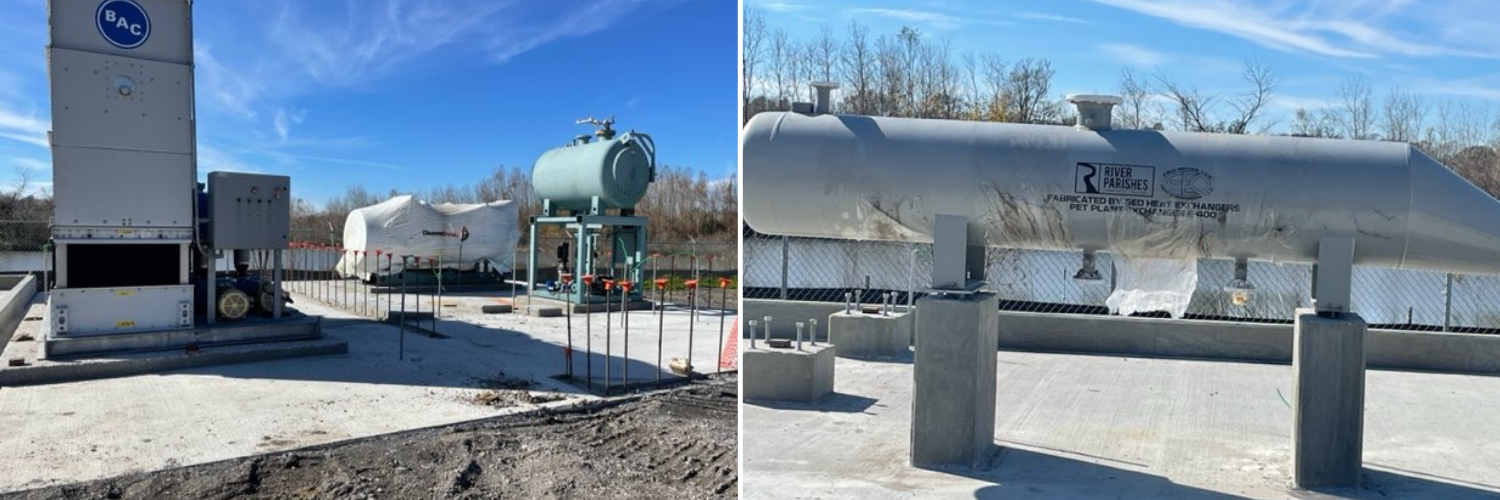
Solar energy is a big focus in southeastern Louisiana. Six new solar farms – ranging in size from 60 to 200 acres – are being constructed in the area, five of them within an hour’s drive of the River Parishes campuses. “We’re looking to partner with other local community colleges and be able to provide solar training, not only for our area, but also take it on the road for our neighboring community colleges and to be able to prepare people to do the installation of those farms.”
Overall, it is about preparing the local workforce for the jobs that are available now and in the immediate future. “We cannot only educate our current students, but we can also educate current employees on different ways of doing things, as well,” Carlson adds.
‘Let me just go for it’

Stevie Green has been in the security business for 25 years, with a little time spent as a pipefitter in the plant construction industry in his hometown of Baton Rouge. Over the years, as he walked his rounds through the BASF facility he helps protect, he’s seen what it takes to work on the operations side. It intrigued him and he wanted to learn more, asking lots of questions of plant managers and friends working there.
He had some initial doubts about training for a new job at age 48, but, with the support of his wife and two kids, he enrolled in RPCC’s P-Tech program. “To switch careers, it was a whole thought process. ‘Should I really even do this?’” he recalls asking himself. “But I feel I have a whole lot of life left and with their support I said, ‘Let me just go for it.’”
Green continues to work full time, but his employer has made it possible for him to attend classes all day on Mondays and Wednesdays, plus another class Wednesday night. “I’m learning how to operate the plant, learning the equipment, learning the products, ensuring proper safety operation, pumps, and instrumentation,” he explains. In essence, he’s learning what everyone does and how they should be doing it correctly.
Green says he’s looking forward to graduating this fall and taking on a new role as a plant operations technician in the town he calls home. “When you have an institution that is geared toward the surrounding communities, that is in itself a game changer. You have all of the surrounding plants that want to pull from those community colleges, because they know that those are local people and there are a lot of local jobs. You are almost guaranteed to have a job and you can stay home with a good salary.”
The Groundwater Supply is in Danger

“Most people really don’t appreciate that all the water we have to use is here already. There is never going to be any more water on the planet. The bell has rung in states like Louisiana and for that matter everywhere that water really is in jeopardy,” warns Paula DiPerna, a consultant to WorkingNation on the green economy and a special advisor to the nonprofit CDP.
We use water in just about every aspect of our personal and professional lives – from drinking to washing to irrigating our soil. According to data from the U.S. Geological Survey, Louisiana is losing groundwater from its aquifers at a rate faster than almost anywhere else in the country. “It’s critical to individual health, public health, and sustenance. We’re losing too much to leakage. We’re losing too much to drought. We’re losing too much to overuse by industry,” says DiPerna.

She adds that groundwater cleanup is virtually impossible. “Once pollution has hit the groundwater, you almost can never get it out. Sometimes you can spray it up in the air, and you can separate out the pollutants, but that’s very costly and also uses a lot of energy. That puts the burden really on trying to keep it clean in the first place.
DiPerna sees this as a major source of the green jobs growth. “Think about a plumber whose mission is to help you avoid water waste and install real purifiers. Plumbers and water managers, water monitoring agents, people who design smart meters, IT people, anything that goes into the protection and stewarding of water, this is a very major field for the future.”
Water is a double-edged sword in Louisiana, says DiPerna. “Louisiana has woken up because of these pounding rains, tremendous, shocking hurricanes, and flooding that they’ve experienced lately, realizing that water is their best friend and also their potential worst enemy.”

Protecting and Restoring the Coastline
“Obviously in our state, the future is conditional on reducing greenhouse gas emissions in the economy, and on protecting and restoring the coasts, and adapting to the reality of more frequent and more severe storms,” says economist Robert Habans. “These are all environmental problems, and we’re going through a time of environmental transition, but it’s also an economic transition that’s closely tied to it.”

(Photo: The Data Center)
Habans conducts research for The Data Center, a nonprofit data analysis organization based in New Orleans. His focus is economic development and workforce development, with an emphasis on water management and coastal resilience. He says addressing these enormous challenges can create new green opportunities for workers.
“When we talk about green jobs, we could be talking about jobs that focus on environmental quality, renewable energy and related technology, and nature-based infrastructure solutions. Out here in Louisiana, we can also think more broadly about jobs in coastal protection and restoration in water infrastructure, and in any other activity that’s based on adapting to climate change in coastal hazards,” he explains.
He points to the work being managed through the Louisiana Coastal Master Plan, a $50 billion plan to restore the state’s coastline. “It’s really important that we protect our coast because that’s the speed bump for Gulf storms as they come in, and it reduces the stress on areas that are outside the levee, obviously, but it also reduces the stress on our flood protection infrastructure for those of us like me inside the levee in New Orleans,” he adds.
Habans says a lot of these jobs have the same overlap with green jobs and renewable energy and with legacy oil and gas-related jobs, but they share the focus on water. “In coastal protection and restoration, that’s a huge engineering and design effort, because they are designing barrier islands, restoration, marsh creation, and flood protection infrastructure.” These jobs can be typically associated with hard infrastructure – skilled construction, engineering, and design. They can also include policy, planning, and environmental sciences.
“Many of Louisiana’s water and green jobs tend to use a lot of mechanical and construction skill sets for some of them, and a lot of problem-solving, technology, and engineering skill sets for others.” He calls these kinds of jobs “middle-earning jobs” because they are accessible, from a skills perspective, to workers with a range of skilled backgrounds. But, he adds, we need to make sure that these opportunities are representative of our entire workforce.
“When you talk about jobs in heavy construction and engineering, it’s not necessarily surprising, unfortunately, that these jobs tend to skew white male,” he observes. “A big challenge for us is going to be, how do we ensure more inclusive representation in those industries, as well as the broader project of more tightly aligning these major investments in our environmental future with the process of supporting communities through times of change and uncertainty, and reducing long-standing issues of inequality in our region.”
Habans adds, “This is especially important to Louisiana because we do have groups that have been historically marginalized or excluded from previous times of economic transition.”
WorkingNation producer Deidra White contributed to the reporting for this article.

